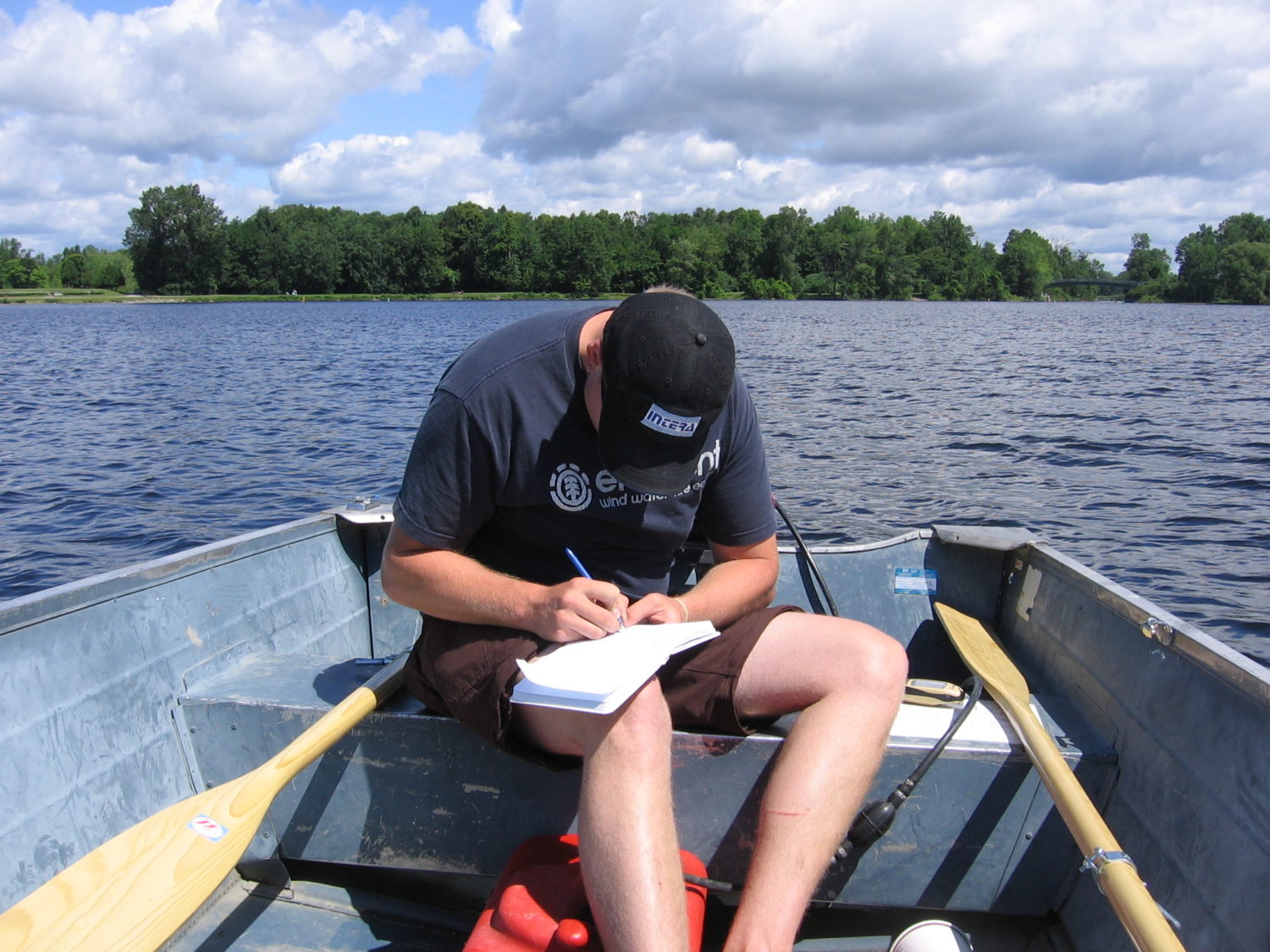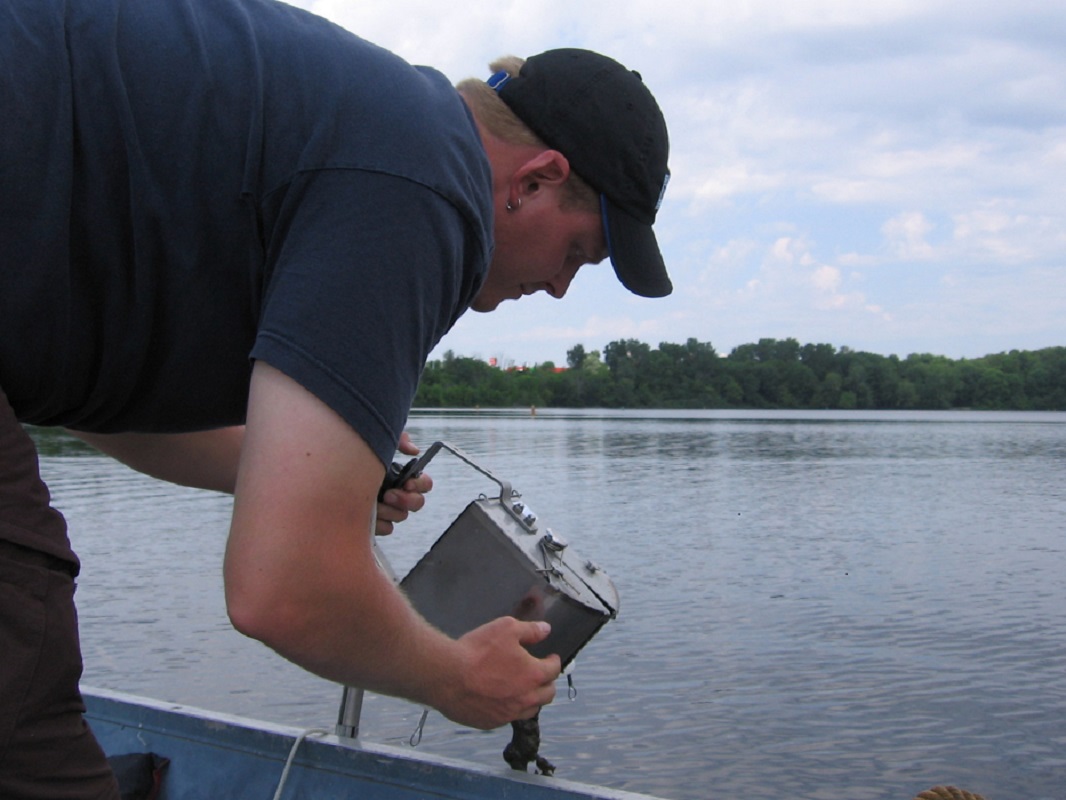screening level risk assessment: Fireworks
in Lac Leamy
Geofirma was retained by the NCC to complete a Screening Level Risk Assessment (SLRA) for the surface water and sediment of Lac Leamy in Gatineau, Quebec. The lake is used for boating, fishing, swimming and was formerly the host site for Les Grands Feux du Casino fireworks competition. The goal was to evaluate sediment quality, monitor perchlorate concentrations in surface water near the swimming area, evaluate the benthic habitat, identify site contaminants of concern, and conduct a screening-level evaluation of risks to human and ecological receptors based on the continued use of the property as a recreational area.
During a three year study, sampling results indicated aluminum, copper, iron, lead, zinc and phosphorous above applicable federal and provincial criteria for surface water, and a spike in perchlorate concentrations following fireworks displays. Sediment sampling confirmed that the fireworks fallout zone showed trends of elevated metals concentrations when compared to background locations. Although perchlorate was detected in the surface water of the site following fireworks displays it appeared to dissipate and break down quickly following the operational season through microbial digestion and did not accumulate in the surface water or sediment. Heavy metals were measured in sediment in the fireworks fallout zone at concentrations above the CCME/MDDEP probable effects levels. Elevated concentrations of heavy metals in sediment of the site may be attributable to fireworks, however, off-site sources such as historical lakeside industry could not be discounted.
Further impairing the ecological function of the lake was an extremely nutrient-rich (e.g. N,P) period in the past, when the lake was disconnected from the Gatineau River (1970-1996) over concerns of upstream contamination from historic mining practices in the Gatineau Hills. Algal blooms resulted, causing an excess of organic matter, which resulted in oxygen deficiency. Hydrological investigations conducted in 2008 determined that Lac Leamy was experiencing decreased nutrient inputs, clearing of its water, and less nuisance plant growth. Thermal stratification reduces the natural re-suspension of sediment, reducing heavy metal mobility, but contributing to the anoxic state in the deeper part of the lake.
The study concluded that there is no risk to human receptors from perchlorate and metals concentrations in the surface water and sediment of the lake. A minimal risk to aquatic plants, daphnia and fish was identified based on various metals detected in surface water, at concentrations above ecological health risk values. A potential risk to the early life stages of fish species was identified due to low levels of dissolved oxygen in the surface water, mitigated by the ability of fish to migrate to different areas with more oxygen. Lastly, the absence of benthic invertebrates in the depths is likely an effect of the anoxic environmental conditions present, rather than the concentrations of metals in the sediment.


© Copyright – Geofirma Engineering Ltd. | 200-1 Raymond St., Ottawa, ON K1R 1A2
